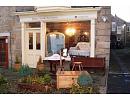Contact Seller
Rams Head Antiques
Tel07769255544Please quote Antiques Atlas.

 Antique Decorative Cheese Keeper, English, Ceramic
Antique Decorative Cheese Keeper, English, Ceramic
 Sarreguemines Advertising Jug
Sarreguemines Advertising Jug
 Japanese Imari Charger
Japanese Imari Charger
 Victorian 9” Ironstone Butchers Scale Plate
Victorian 9” Ironstone Butchers Scale Plate
 Spode Armorial Plate
Spode Armorial Plate
 Retro Sgraffito Royal Blue Jug
Retro Sgraffito Royal Blue Jug
 Antique Chinese Oriental blue & white ginger jar
Antique Chinese Oriental blue & white ginger jar
 Pair Of Tall Antique Stem Vases, Austrian, Ceramic
Pair Of Tall Antique Stem Vases, Austrian, Ceramic
 Massive pair of Chinese Floor Vases
Massive pair of Chinese Floor Vases
 Chinese Bamboo Pattern Porcelain Tea c.1960s
Chinese Bamboo Pattern Porcelain Tea c.1960s
 Antique Cheese Keeper, English, Ceramic
Antique Cheese Keeper, English, Ceramic
 Moon Landing Plate Apollo 11 1969
Moon Landing Plate Apollo 11 1969
Non UK callers :
+44 7769255544
Large Sunderland Pink Lustre Jug Iron Bridge

This is a good large Sunderland pink lustre jug probably by Dixons, with transfer print of the New Cast Iron bridge over the river Wear completed in 1796. This features a transfer of the clipper ship Northumberland to the other side and the sailors verse “Forget me not” to the front with the monogram M. C. The jug is in really great condition for its age with only a small historic repair to the spout evident.
The jug dates from around 1800. Sunderland lustreware came from North East potteries Scott’s, Dixon & co, Balls, Garrison Pottery Moores, Maling, St, Anthony’s, Sherif Hill and Fords pottery all manufacturing throughout the early 1800s.
This jug is substantial in size so quite a looker measuring 24 cms high by 30 cms wide (spout to handle).
UK insured packing and delivery is £15
SellerRams Head Antiques
View all stock from
Rams Head Antiques

 17 Front Street
17 Front Street
Wolsingham
Weardale
Durham
DL13 3DF
Tel : 07769255544
Non UK callers : +44 7769255544
Get directions to Rams Head Antiques
The jug dates from around 1800. Sunderland lustreware came from North East potteries Scott’s, Dixon & co, Balls, Garrison Pottery Moores, Maling, St, Anthony’s, Sherif Hill and Fords pottery all manufacturing throughout the early 1800s.
This jug is substantial in size so quite a looker measuring 24 cms high by 30 cms wide (spout to handle).
UK insured packing and delivery is £15
Price The price has been listed in British Pounds.
The price has been listed in British Pounds.
Conversion rates as of 6/MAR/2025. Euro & Dollar prices will vary and should only be used as a guide.
Always confirm final price with dealer.
Category Antique Ceramics
Period Early 19th Century Antiques
Maker Sunderland
Item code as623a3679
Status For Sale
£285.00 
$367.39
€339.63

$367.39

€339.63


Conversion rates as of 6/MAR/2025. Euro & Dollar prices will vary and should only be used as a guide.
Always confirm final price with dealer.
View all stock from
Rams Head Antiques

 17 Front Street
17 Front StreetWolsingham
Weardale
Durham
DL13 3DF
Tel : 07769255544
Non UK callers : +44 7769255544
Get directions to Rams Head Antiques
You may also be interested in
 Antique Decorative Cheese Keeper, English, Ceramic
Antique Decorative Cheese Keeper, English, Ceramic
 Sarreguemines Advertising Jug
Sarreguemines Advertising Jug
 Japanese Imari Charger
Japanese Imari Charger
 Victorian 9” Ironstone Butchers Scale Plate
Victorian 9” Ironstone Butchers Scale Plate
 Spode Armorial Plate
Spode Armorial Plate
 Retro Sgraffito Royal Blue Jug
Retro Sgraffito Royal Blue Jug
 Antique Chinese Oriental blue & white ginger jar
Antique Chinese Oriental blue & white ginger jar
 Pair Of Tall Antique Stem Vases, Austrian, Ceramic
Pair Of Tall Antique Stem Vases, Austrian, Ceramic
 Massive pair of Chinese Floor Vases
Massive pair of Chinese Floor Vases
 Chinese Bamboo Pattern Porcelain Tea c.1960s
Chinese Bamboo Pattern Porcelain Tea c.1960s
 Antique Cheese Keeper, English, Ceramic
Antique Cheese Keeper, English, Ceramic
 Moon Landing Plate Apollo 11 1969
Moon Landing Plate Apollo 11 1969







